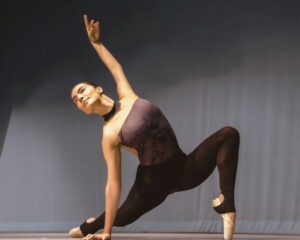How To Get Rid of a Crick in the Neck
Cricks in the neck are common, and they can be caused by a variety of things, including poor posture, sleeping in an awkward position, or overusing the neck muscles.
Treatment for a crick in the neck often involves applying heat or ice to the affected area, taking over-the-counter pain medication, and gently stretching the neck muscles to relieve tension. Chiropractors at Elite Chiropractic help to identify the root cause of neck pain and help to treat the underlying cause, not just the symptoms.
But just what are all the causes of a crick in the neck? And what treatment options are available when the general approach has not worked? Read on to discover all the ways we approach neck pain for our patients.
If you are experiencing persistent neck pain or have a severe crick in the neck, contact us today to learn about our treatment plan.
What is a Crick in the Neck
A crick in the neck is a sharp pain or stiffness in the neck that is caused by a muscle spasm or strain. It is often accompanied by difficulty moving the neck, and it can be quite uncomfortable. The pain is typically felt on one side of the neck, and it may radiate down into the shoulders or upper back (what is Disc Herniation Treatment and Sciatica Treatment)
What Causes a Crick in the Neck
There are several potential causes of a crick in the neck, including:
- Poor posture
- Sleeping in an awkward position
- Straining the neck muscles through overuse
- Stretching the neck muscles too far or too quickly
- Holding the head in the same position for an extended period of time, such as when using a computer or reading
- Experiencing a sudden impact to the neck, such as in a car accident or a sports-related injury
In some cases, a crick in the neck may also be a symptom of a more serious underlying medical condition, such as arthritis, a herniated disc, or a spinal condition. If the pain is severe or persists for more than a few days, it is important to see a doctor for a proper diagnosis and treatment plan.
How to Treat a Crick in the Neck with Chiropractic Care
A chiropractor is a healthcare professional who specializes in treating musculoskeletal conditions, such as a crick in the neck. A chiropractor can help to relieve pain and discomfort associated with a crick in the neck through a variety of techniques, including spinal manipulation and adjustments. These techniques involve applying gentle, controlled force to the joints of the spine and neck in order to restore proper alignment and improve mobility.
In addition to spinal manipulation, a chiropractor may also recommend other treatments to help relieve the pain and discomfort associated with a crick in the neck. These may include:
- Massage therapy to help relax the muscles and improve blood flow
- Stretching and strengthening exercises to improve flexibility and support the neck muscles
- Postural training to help improve posture and prevent future cricks in the neck
- Lifestyle and nutritional advice to help manage pain and prevent future injuries
Our chiropractors can work with you to develop a personalized treatment plan that addresses your specific needs and goals. Depending on the severity of your crick in the neck and any underlying conditions, multiple visits may be necessary to achieve optimal results.
How to Treat a Crick in the Neck at Home
Treatment for a crick in the neck often involves self-care measures that can be done at home. Part of your personalized treatment plan will include some or all of the below at-home treatments for a crick in the neck to maintain mobility and decrease in pain:
- Applying heat or ice to the affected area. Heat can help to relax the muscles and promote blood flow, while ice can help to reduce swelling and inflammation.
- Taking over-the-counter pain medication, such as acetaminophen or ibuprofen, to help relieve pain and discomfort.
- Gently stretching the neck muscles to relieve tension. This can be done by slowly turning the head from side to side, or by tilting the head back and forth. It is important to avoid over-stretching, as this can make the pain worse.
- Avoiding activities that strain the neck muscles, such as heavy lifting or prolonged periods of sitting or standing in the same position.
- Maintaining good posture, especially when sitting or standing for long periods of time.
If the pain is severe or persists for more than a few days, it is important to return for regular visits to revisit the approach and possibly receive an alternative diagnosis and treatment plan. We may recommend additional treatments, such as physical therapy or medication, to help manage the pain and prevent the crick in the neck from recurring.
Seek Pain Relief from a Crick in the Neck Today
In conclusion, seeing a chiropractor for a crick in the neck can provide a number of benefits. We can provide effective relief from pain and discomfort through a variety of techniques, including spinal manipulation and adjustments plus at-home treatments to continue the work.
In addition to providing relief from pain, our Columbia chiropractors and pain specialists can also help to improve flexibility and mobility, and we can provide advice on how to prevent future cricks in the neck.
Let us work with you to develop a personalized treatment plan that addresses your specific needs and goals, and with regular visits, you can manage your crick in the neck and improve your overall quality of life with little to no more interference.
About the Author
Dr. Bross is the owner of Elite Chiropractic and Sport. He serves as a Certified Chiropractic Sports Practitioner (CCSP) and Certified Strength and Conditioning Specialist. His unique approach to individualized patient care is based on the evaluation and treatment of the “whole” person.
Dr. Bross is a leader in the promotion of health and wellness. He has accumulated an extensive knowledge of the musculoskeletal and nutritional components of the human body. He is skilled in the Graston Technique, Active Release Technique, and Sports Medicine.






